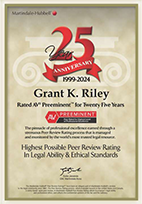Where Do Cockroaches Live?
Cockroaches are generally present in old, deteriorated apartments or rental homes or where other tenants have cockroaches, which allows them to spread throughout the building quickly.
Cockroaches are nocturnal insects that prefer to hide in dark and damp cracks and crevices. Seeing cockroaches during the day signifies a severe infestation, as it indicates overcrowding within their hiding places.
Spraying around the exterior of any apartment building or even spraying inside your home with cheap, ineffective pesticides will never resolve a cockroach infestation.
Unfortunately, many of the spray chemicals used by low-end, unprofessional mom-and-pop pest control companies are completely inadequate. These spray chemicals will only push the cockroaches deeper into your walls and other hiding places. As soon as the chemicals dry and dissipate, they’ll come out and invade your home once again.
The Problem with a Cockroach Infestation
- Cockroaches may bite while feeding on skin, hair, or lashes.
- They can enter ear canals of children.
- They are carriers of bacteria, posing health risks.
Even one cockroach in restaurants or hospitals can trigger shutdowns due to contamination risks.
How to Control a Cockroach Infestation
The pest control companies that practice Integrated Pest Management take steps to:
- Place traps around your apartment or rental home to monitor the severity of the inspection
- Seal cracks and crevices to prevent cockroaches from entering your home
- Dust with diatomaceous earth behind electrical outlets
- Use gel bait to combat a cockroach infestation
Can I Sue My Landlord for a Cockroach Infestation?
Don’t let your landlord blame you for a cockroach infestation in your home. Every landlord in California is required to maintain the safety and habitability of your home. That includes taking all necessary steps to eliminate any cockroach infestation in your home.
Litigation Strategies for Cockroach Infestations
One effective litigation strategy in cockroach infestation cases is to gather compelling evidence that substantiates the severity and extent of the infestation. This may involve documenting the presence of cockroaches through photographs, videos, and professional pest control reports. Additionally, enlisting the expertise of entomologists or pest control experts as expert witnesses can provide valuable insights and support the case.
Another powerful strategy is to highlight any violations of health and safety regulations or breaches of landlord/tenant laws that may have contributed to the infestation. Demonstrating negligence or breach of duty on the part of the responsible parties makes it possible to establish liability and seek appropriate damages. Moreover, exploring the potential for class action lawsuits can bring together multiple affected tenants, amplifying the strength of the case and facilitating a collective pursuit of justice.
Finally, pursuing settlement negotiations or alternative dispute resolution methods, such as mediation or arbitration, can offer opportunities for timely resolution, compensation for damages, and implementation of measures to address the infestation issue.
What are Bed Bugs?
Bed bugs are small, parasitic insects that feed on the blood of humans and animals, usually at night while the host is sleeping. They are reddish-brown, flat, oval-shaped, and about the size of an apple seed (4–5 mm). Despite their name, bed bugs can be found not only in beds but also in cracks, crevices, furniture, luggage, and clothing.
Babies have almost no color, while adult bed bugs can vary in color from red and brown to copper. They do not fly but can either crawl or be carried from place to place on objects, people, or animals.
Bed bugs are usually introduced into an environment through one of the following ways:
- Travel and Luggage: They often hitchhike on luggage, clothing, or personal items when a person stays in an infested place (like hotels, hostels, or public transportation).
- Used Furniture: Bringing in secondhand mattresses, couches, or furniture can introduce bed bugs.
- Close Living Quarters: Apartments, dorms, and other shared housing can easily spread infestations through walls, pipes, or hallways.
- Visitors or Guests: Someone who has a bed bug problem at home can unintentionally bring them to your home.
- Public Places: Bed bugs can also be picked up in places like movie theaters, buses, offices, or laundromats.
Leasing a Home or Apartment with Bed Bugs?
Are you living in a leased apartment that is infested with bed bugs? Have you and your loved ones suffered injuries from bed bug bites? Have you had to throw out mattresses, sofas, or other furniture because of bed bug infestations? Is your landlord ignoring you or not doing enough to resolve this serious problem?
Bed bugs are hard to find and identify because they are tiny and try to stay hidden. Because bed bugs usually feed at night, most people are bitten in their sleep without knowing. Sometimes, the red welts caused by the bites will go unnoticed for several days until they become itchy and even painful.
A bed bug infestation can be identified by certain telltale signs, including:
- Blood stains on your sheets or pillowcases
- Dark or rusty spots of bed bug excrement on sheets and mattresses, clothes, and walls
- Bed bug fecal spots, egg shells, or shed skins where bed bugs hide
- Offensive, musty odor from the bug’s scent glands
Bed bugs also hide in a variety of places. Closer to the bed, you can often find them hiding near the piping, mattress seams and tags, box springs, and cracks on the bed frame and headboard.
In cases of heavy bed bug infestation, bed bugs may also hide in the following places:
- Drawer joints
- Chair and couch seams
- Between cushions
- Curtain folds
- Electrical receptacles and appliances
- Junctions where the wall and the ceiling meet
- Under loose wallpaper and wall hangings
Since bed bugs are only about the width of a credit card, their size allows them to pack into many types of small hiding spots. Essentially, if you can slip a credit card into the space, it could be hiding a bed bug.
How to Remove Bed Bugs
Getting rid of bed bugs can be difficult, but it's entirely possible with a systematic and persistent approach. Here's a step-by-step guide:
- Confirm the Infestation: Look for signs like bites, blood stains, black dots (feces), shed skins, or live bugs. Inspect mattresses, bed frames, furniture seams, and baseboards thoroughly.
- Clean and Declutter: Remove clutter around beds and walls to reduce hiding spots. Wash all fabrics in hot water and dry on high heat, then vacuum carpets, furniture, and mattress seams thoroughly.
- Use Heat or Cold: Kill bed bugs by steaming infested areas or drying items on high heat for at least 30 minutes. For smaller items, freezing them at 0°F (-18°C) for four or more days also works.
- Apply Insecticides (Carefully): Use insecticides specifically labeled for bed bugs, including sprays, dusts, and contact killers. Follow all label directions carefully and keep treated areas safe from pets and children.
- Prevent Reinfestation: Cover your mattress and box spring with bed bug-proof encasements and use traps under bed legs. Seal cracks and avoid bringing in used furniture unless it’s been carefully inspected.
- Call a Professional (If Needed): If bed bugs persist, contact a licensed pest control service for stronger treatments like whole-room heat. Professionals can also monitor and follow up to ensure the infestation is completely gone.
A Landlord’s Duty When It Comes to a Bed Bug Infestation in L.A.
In California, landlords are prohibited from showing or renting out a unit that they know is infested with bed bugs. Landlords must also provide new tenants with written notice about bed bugs, including general information about the appearance, life cycle, and common signs and symptoms of a bed bug infestation.
Landlords must provide tenants with the procedure that they should follow to report suspected bed bug infestations. California law also provides that a landlord cannot retaliate against a tenant after the tenant notifies the landlord of a bed bug infestation.
This means that the landlord cannot evict, raise rent, harass, threaten, or intimidate the tenant for reporting the infestation. The affected unit and all surrounding units should be inspected and treated as deemed necessary. A follow-up inspection of all affected units must be performed a few weeks later to confirm that the treatment resolved the infestation.
What Damages Can You Sue for in a Los Angeles Bed Bug Infestation Lawsuit?
In a bed bug infestation legal claim, there are several types of damages that you can pursue. These damages aim to compensate you for the losses and harm you have experienced due to the infestation.
Here are some common types of damages:
- Property damage: Bed bugs can cause damage to personal belongings, including furniture, mattresses, clothing, and other items that may need to be discarded or professionally treated to eliminate the infestation. You can seek compensation for the cost of repairing or replacing these damaged items.
- Medical expenses: If you have suffered physical injuries or health issues as a result of the bed bug infestation, such as bites, allergic reactions, or infections, you can pursue compensation for your medical expenses. This includes doctor visits, medications, treatments, and any other healthcare costs related to the infestation.
- Emotional distress: Bed bug infestations can have a significant impact on your mental and emotional well-being, causing stress, anxiety, sleep disturbances, and other emotional distress.
- Pain and suffering: If you have experienced physical pain and discomfort due to bed bug bites or related health issues, you can seek compensation for your pain and suffering.
- Relocation expenses: If you were forced to temporarily or permanently relocate from your residence due to the infestation, you could pursue damages for the costs associated with moving, finding new accommodations, and any additional expenses incurred as a result of the displacement.
Act Now–Contact the Los Angeles Cockroach & Bed Bug Lawyers at Riley Ersoff
Landlords must maintain habitable premises. They are liable for infestations, injuries, and damages caused by negligence.
- Riley Ersoff has recovered millions of dollars for tenants
- We offer free consultations and contingency fees – pay nothing unless we win
- Every case is prepared for trial to achieve the best possible outcome
Contact us today at (888) 658-9695 to speak with a Los Angeles cockroach and bed bug lawyer.



















